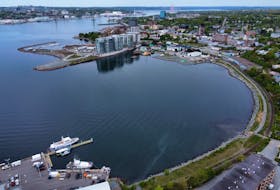Under the intensely nationalistic regime of President Recep Tayyip Erdogan, Turkey is moving further away from its NATO partners. This has accelerated since the failed coup of July 2016.
Unlike its allies, Turkey has refused to distance itself from Russia. Their economic ties are substantial. Turkey is Russia’s number two trading partner.
Erdogan and President Vladimir Putin met in Ankara recently and agreed to speed up the delivery of S-400 air-defence missile systems sold by Russia to Turkey, a purchase that has raised concern among Turkey’s NATO partners.
They also formally launched the construction of Turkey’s first nuclear power plant, a $20 billion project in Turkey’s southern Mediterranean coastal region of Mersin. It is being built by Russia’s nuclear regulatory agency, Rosatom.
The two countries are also building the TurkStream pipeline, estimated to be worth more than $12 billion, to transport Russian gas to Turkey.
Erdogan has been particularly irritated by the United States’ alliance in Syria with the People’s Protection Units (YPG), a Kurdish group that Turkey claims is linked to terrorism.
He told legislators from his Justice and Development Party that “if there are those who prefer a couple of terrorists, marauders against such a nation, such a state, we will no doubt slap this answer in their faces, on their hearts. They should know that.”
Nationalism, as a political discourse requiring a fundamental connection to a particular territory has constantly referred to maps as evidence of the existence of the respective nation.
In the case of modern Turkey, nationalism has been sensitive towards the borders defining national territory, and maps have been instruments for the cultural production of nationalism in Turkey.
The favorite use of the map in popular culture in recent decades has been the flag-map logo superimposing the crescent-and-star of the Turkish flag onto the outline of the national territory. Isolated from its surrounding geographical context, it implies a national unity within Turkey’s boundaries.
Each and every classroom in elementary and high schools is required to have a national map hung on its walls. In addition, a decree regulating textbooks has also required them to include national maps.
Some maps are frankly irredentist, claiming territory as Turkish that is legally part of Greece or Cyprus.
The Aegean islands, which belong to Greece, are shown in one school map while mainland Greece is cut out. Depicted this way, the islands appear as located within the territorial waters of Turkey.
In addition, the southern border of the map cuts the island of Cyprus into two; the northern part, which is a de facto Turkish state, appears, while the southern Greek Cypriot part is omitted.
In some unofficial maps, northern Iraq, including Mosul, Kirkuk and Erbil; all of Armenia; and Cyprus and the Greek islands in the Aegean Sea are incorporated into Turkey.
More extreme versions include a larger portion of Iraq together with a considerable section of Syria, including Aleppo.
As well, Turkey’s eastern frontier is expanded to include territory in Iran, Armenia and Azerbaijan, while the western border is moved further to integrate Western Thrace, including Salonika, now in Greece.
Most of these territories at one time were part of the Turkish Ottoman Empire. Are such maps making sure that this memory does not disappear?
Henry Srebrnik is a professor of political science at the University of Prince Edward Island.









